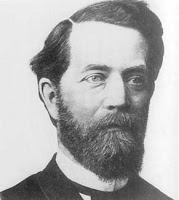* Your type formula according to Carl Jung and Isabel Myers-Briggs typology along with the strengths of the preferences
* The description of your personality type
* The list of occupations and educational institutions where you can get relevant degree or training, most suitable for your personality type - Jung Career Indicator™
So you acquiescence to systemic methods in which to discern your "personality type." You wonder what basis this system sought to demonstrate, by showing the value of these types? So why not look? Which temperament do you belong too?
Idealist Portrait of the Counselor (INFJ)
Counselors have an exceptionally strong desire to contribute to the welfare of others, and find great personal fulfillment interacting with people, nurturing their personal development, guiding them to realize their human potential. Although they are happy working at jobs (such as writing) that require solitude and close attention, Counselors do quite well with individuals or groups of people, provided that the personal interactions are not superficial, and that they find some quiet, private time every now and then to recharge their batteries. Counselors are both kind and positive in their handling of others; they are great listeners and seem naturally interested in helping people with their personal problems. Not usually visible leaders, Counselors prefer to work intensely with those close to them, especially on a one-to-one basis, quietly exerting their influence behind the scenes.
ounselors are scarce, little more than one percent of the population, and can be hard to get to know, since they tend not to share their innermost thoughts or their powerful emotional reactions except with their loved ones. They are highly private people, with an unusually rich, complicated inner life. Friends or colleagues who have known them for years may find sides emerging which come as a surprise. Not that Counselors are flighty or scattered; they value their integrity a great deal, but they have mysterious, intricately woven personalities which sometimes puzzle even them.
Counselors tend to work effectively in organizations. They value staff harmony and make every effort to help an organization run smoothly and pleasantly. They understand and use human systems creatively, and are good at consulting and cooperating with others. As employees or employers, Counselors are concerned with people's feelings and are able to act as a barometer of the feelings within the organization.
Blessed with vivid imaginations, Counselors are often seen as the most poetical of all the types, and in fact they use a lot of poetic imagery in their everyday language. Their great talent for language-both written and spoken-is usually directed toward communicating with people in a personalized way. Counselors are highly intuitive and can recognize another's emotions or intentions - good or evil - even before that person is aware of them. Counselors themselves can seldom tell how they came to read others' feelings so keenly. This extreme sensitivity to others could very well be the basis of the Counselor's remarkable ability to experience a whole array of psychic phenomena.
When you "discover a symbol" as indicated in the wholeness definition presented below, you get to understand how far back we can go in our discoveries. While I talk of Mandalas, I do for a reason. While I talk of the inherent nature of "this pattern" at the very essence of one's being, this then lead me to consider the mathematical relations and geometries that become descriptive of what we may find in nature with regards to the geometric inclinations to a beginning to our universe? How nice?
Wholeness. A state in which consciousness and the unconscious work together in harmony. (See also self.)
Although "wholeness" seems at first sight to be nothing but an abstract idea (like anima and animus), it is nevertheless empirical in so far as it is anticipated by the psyche in the form of spontaneous or autonomous symbols. These are the quaternity or mandala symbols, which occur not only in the dreams of modern people who have never heard of them, but are widely disseminated in the historical records of many peoples and many epochs. Their significance as symbols of unity and totality is amply confirmed by history as well as by empirical psychology.[The Self," ibid., par. 59.]
Update:
See:Expressions of Compartmentalization




















